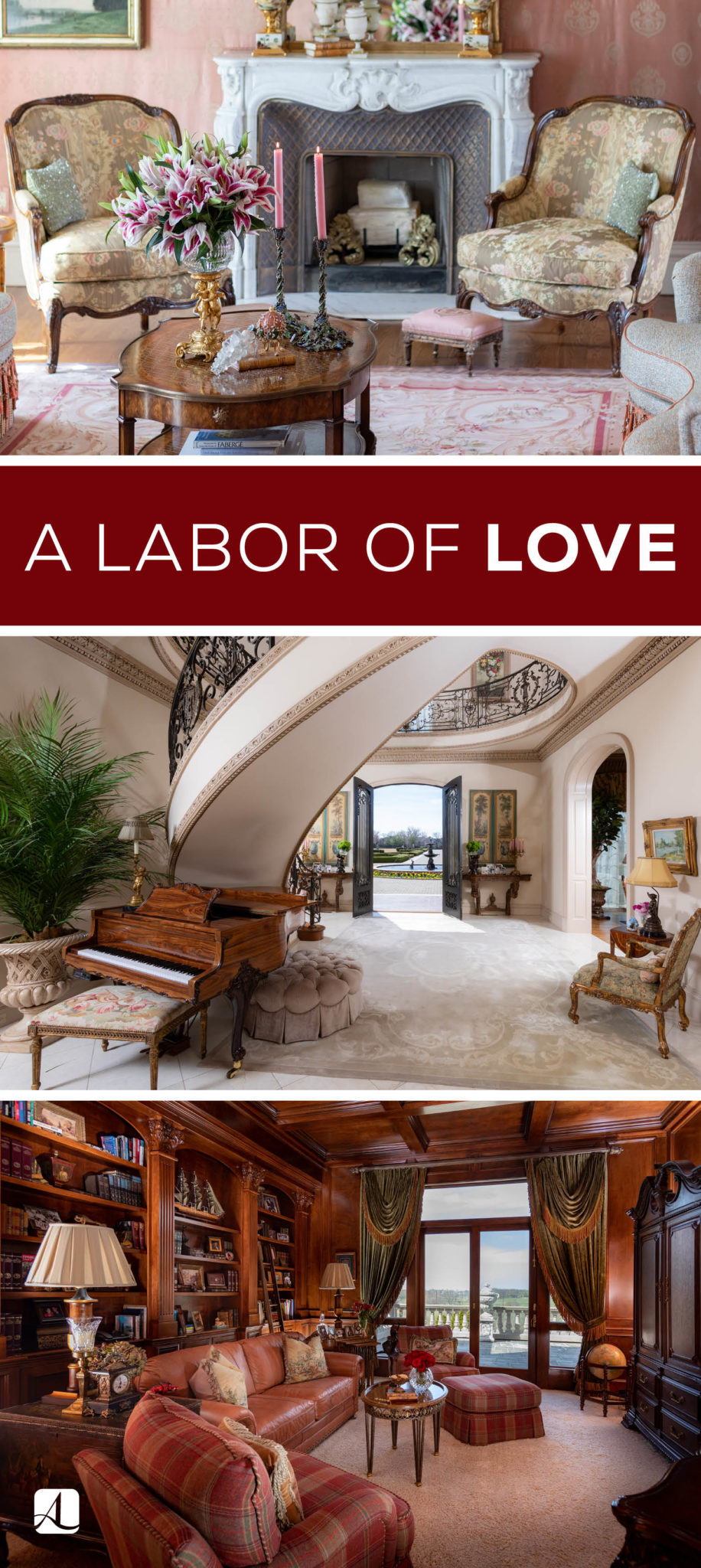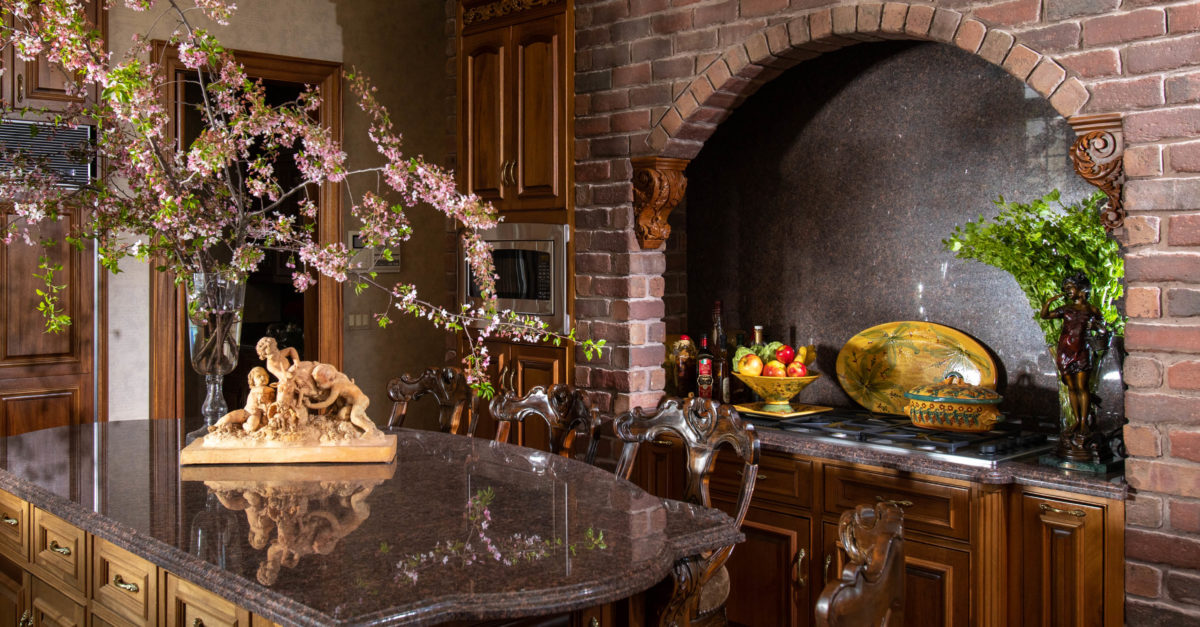A Labor of Love
Photography by Chroma/Mark Jackson
High-end designer Chris Goddard discusses the secrets to his longtime success, his time on a reality TV show, and an award-winning French chateau project that’s both a home and a love letter.

Tell us about your upbringing:
I’m an only child and only grandchild, so I was spoiled. But I grew up in a great, creative family. My mom was an artist, my father loved architecture, and my uncle was a famous florist. My parents felt that travel is the biggest educator, so I’d travel with them around the world. My parents and grandparents were also big art collectors—but they believed in buying items with intent, and that’s translated into my brand.
Were you always interested in interior design?
We had a very modern house with a lot of built-ins, so, as a kid, I would constantly rearrange anything I could in my room and around the house. That continued even when I got my first big client at age twenty-one. Built-ins were everywhere in her house, so, of course, the first thing I did was rip them all out. I think this constant need for change helped trigger my passion for design.
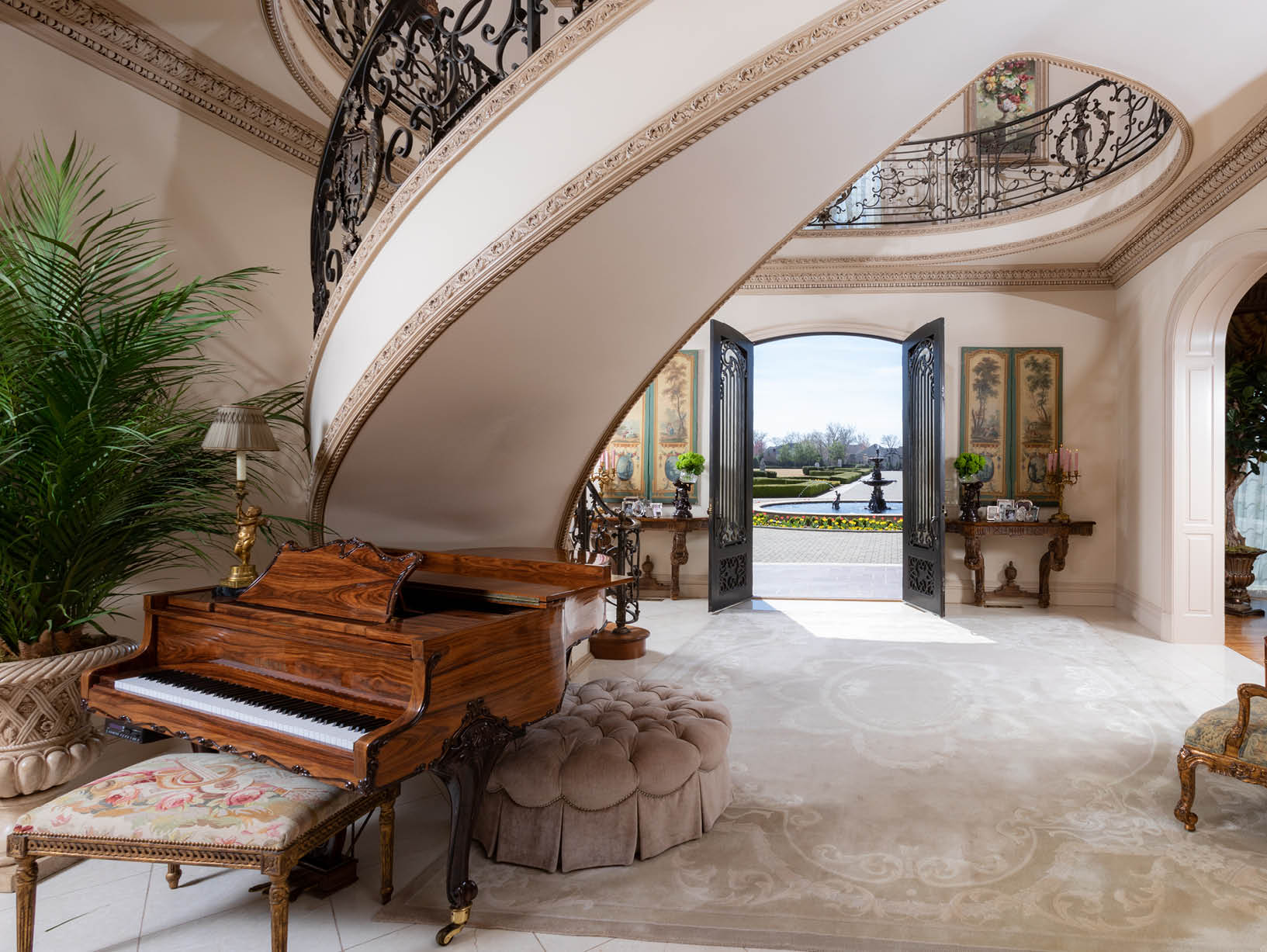
You were quite young when you started. How did that come about?
After college, I had a job where I created displays in a men’s department store. One of our regulars liked them and asked if I could work on the bookcases in her massive house. That led to me helping her with some rooms and then the whole house. Before I knew it, I was designing all of her family’s corporate offices and homes, her friends’ homes, etc. I did that for nine years. I was in the right place at the right time but also had the talent.
What’s your ideal client-designer relationship?
In my opinion, a house should never look like I was there. It should reflect the homeowner, so I spend a lot of time getting to know my clients and getting them involved in the process. I want every client to feel unique, so we don’t ever use the same fabric twice for the same piece of furniture.
Tell us about the area where this French chateau project is located:
We have a lot of commerce here in northwest Arkansas—in fact, at one point, I believe we had more billionaires per square mile than anywhere in the world. I just happened to be here when the area exploded. There was no architectural style for these massive new homes, so I got to set the tone and became the go-to person for luxury design.
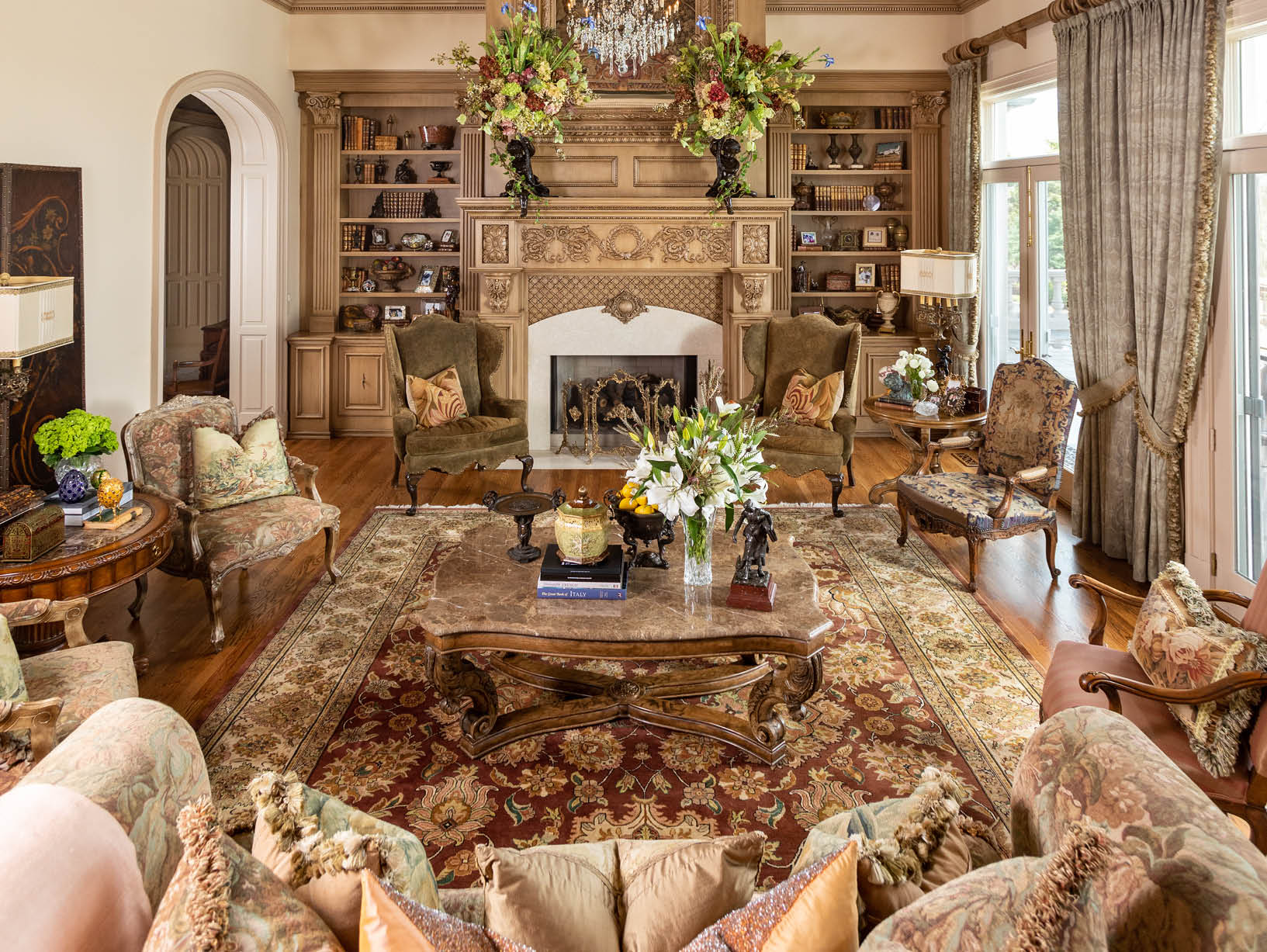
How did the project come about? What were the clients’ wishes?
I had been designing ultramodern homes, so this project was a breath of fresh air. When I first got it, my client, Jeannie, and her husband, Bill, had already started creating their dream house on three hundred acres in Rogers, Arkansas. But Bill got very sick, so Jeannie came to me because she wanted to see it finished before he passed.
Their goal was to recreate their favorite French chateau, and they wanted it to be authentic both inside and out—down to every tree, door handle, and door stopper—so it didn’t look like this mega-mansion was dropped in the middle of the countryside. The home is surrounded
by limestone and iron fencing, and the driveway is forged from a mile of granite blocks, all hand-cut by artisans from around the world. Likewise, everything in the house is made by hand.
The project was almost done when Bill passed, so it got put on hold for a few years. Then Jeannie wanted to finish it to honor him. It became a love letter to her husband, so we began to personalize a lot of it. From the framing to the furnishing, the project took around
ten years. I sometimes look back and wonder how we pulled it off.
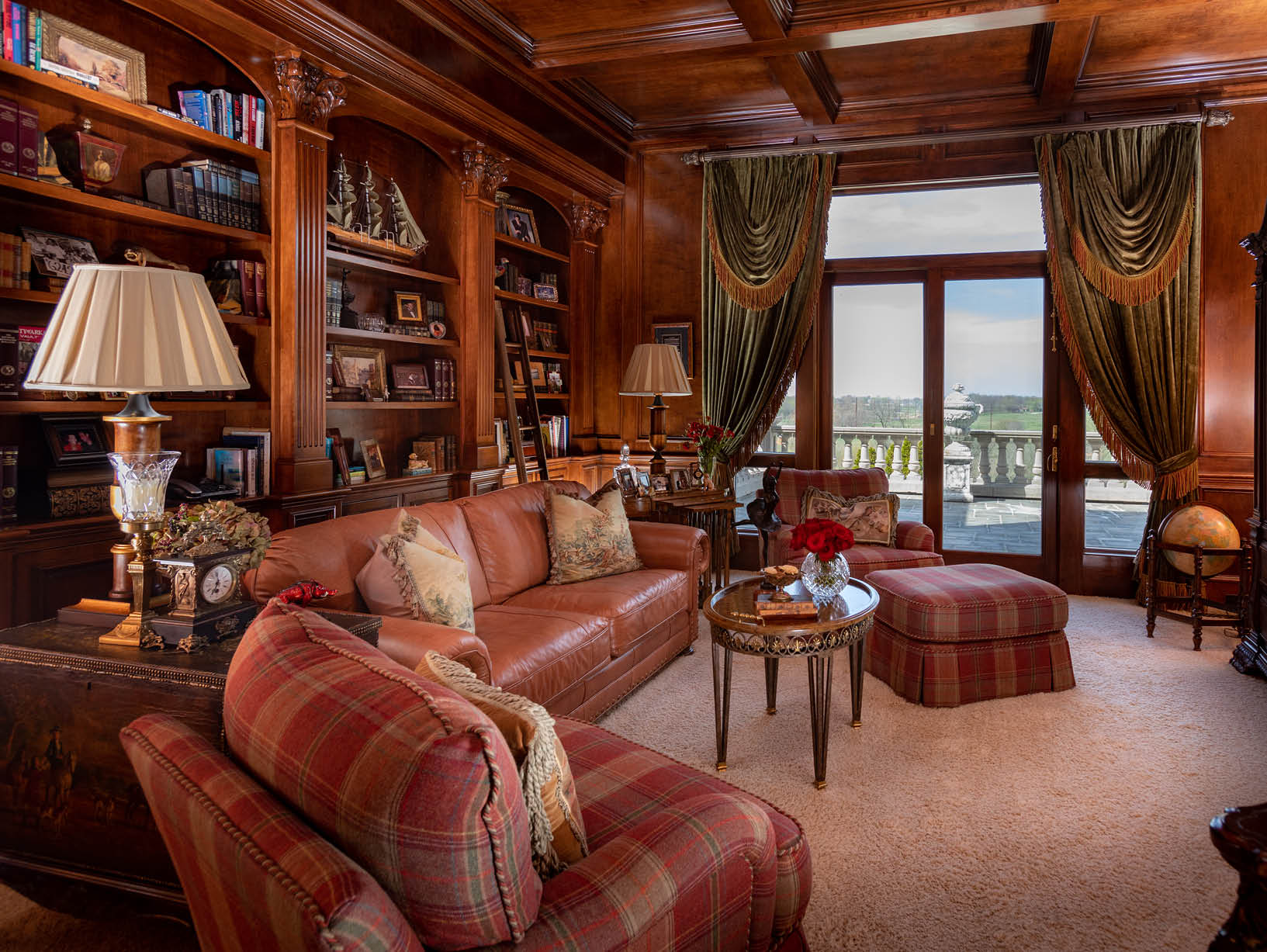
How did you honor their love?
Bill had bought gifts for Jeannie, such as chandeliers, which we added. We also incorporated certain architectural elements, such as the lovebirds hand-carved into the plaster details of the living room. And the kitchen bricks were literally taken from their favorite downtown street where they dated as youngsters. There are lots of other little tributes to him throughout as well, such as a motif of his favorite flower, the iris.
How did you make such a large house feel like a home?
The key is making it warm, cozy, and inviting; otherwise, the rooms can feel sterile. We wanted people to come in, sit down, and feel comfortable in any room, so we made the finishes more welcoming by using wood tones and created more intimate seating areas with textured furniture. Some of the architecture, such as the staircase that’s modeled after the one in the French president’s home, is grand, and we counterbalanced that with cast bronze. Also, even though the artwork is of museum quality, it doesn’t make the house feel like a museum.
Which rooms are you most proud of?
I love the formal dining room and living room, which are across the grand hall from each other. I used a fun trick with them. The walls are upholstered in silk; I used the front side of the fabric in the dining room and the back side in the living room, so they look the same but they’re not. Plus, the beautiful apricot color feels so inviting. The master bedroom also turned out really beautiful with its hues of pink.

What other clever touches did you incorporate?
We repeated the exterior of the house throughout the interior. For example, it’s painted on the headboard in the master bedroom, and there’s a massive tapestry in the family room that shows the front of the home. So when you walk in, it’s kind of an indoor-outdoor feel. Things like this make you feel comfortable but you don’t know why, which is what really good design is about.
How does height play into the overall feel?
Ceilings are vitally important, especially for a house with so much height, because when people walk into a room their eyes automatically go up. So I wanted to add special little details in each room, such as fruits in the dining room molding. And, in the master bedroom, we covered the ceiling with sheets of platinum and added a massive rose quartz crystal chandelier.
You recently renovated this chateau. What did you update?
My brand emphasizes timeless elegance and quality and doing things right the first time, so it never goes out of style—you just make subtle updates. This house was beautiful before but so neutral, which reflected Jeannie’s mindset at the time. When it came time to renovate, she was ready for color. Her favorite color is any shade of blush and Bill’s was a French green, so we injected these colors in different tones. We also refreshed the wallpaper, added more interesting art, and updated all the rooms to reflect her current happiness.
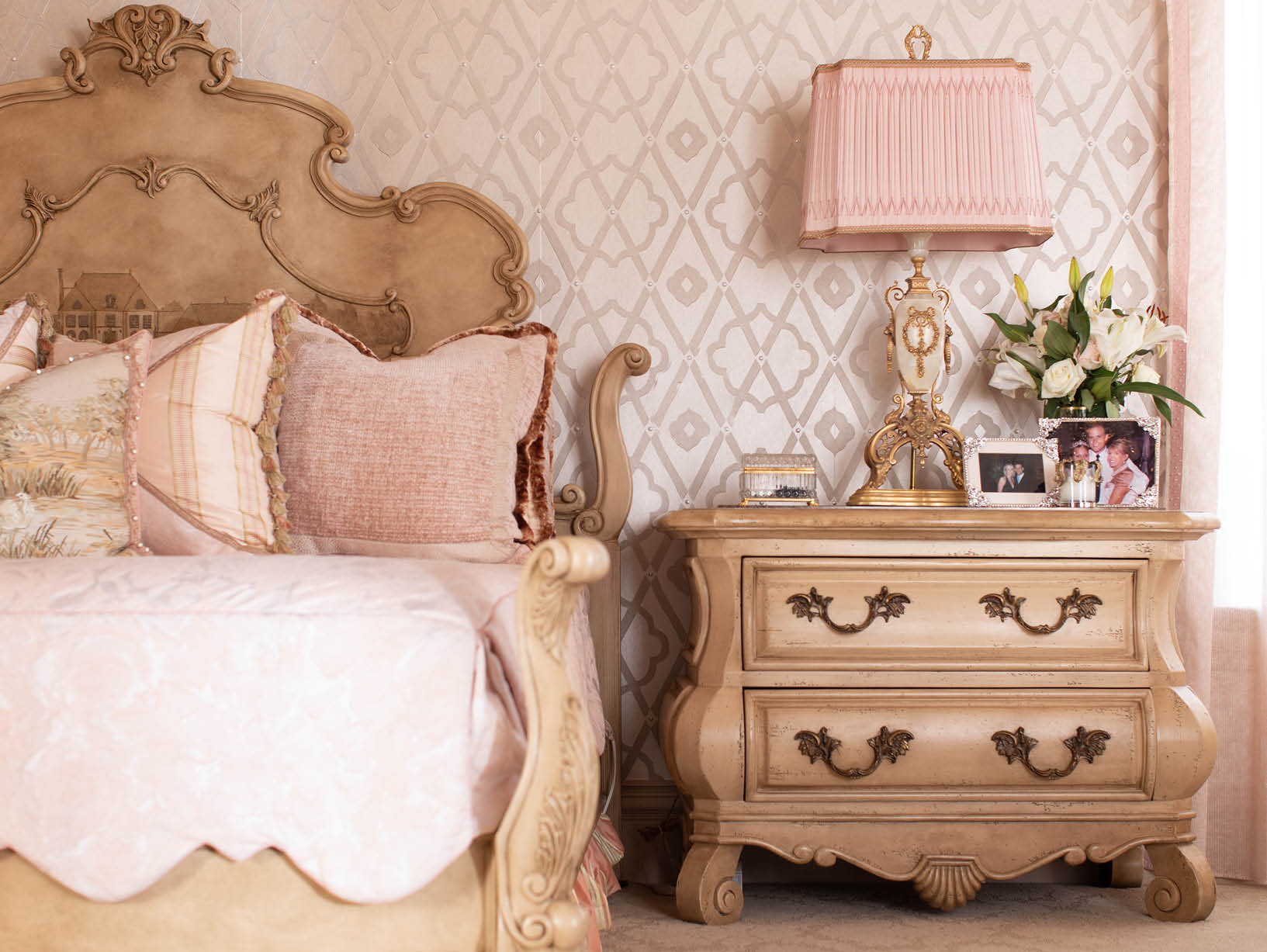
What was it like being a competitor on HGTV’s Design Star: Next Gen?
It was a fun, unexpected ride. I looked at it as an opportunity to push myself out of my comfort zone. It was also nice to show that luxury designers do have fun and get our hands dirty. I had a blast. As a designer, do you take notes when inspiration hits? I have a photographic memory, which is great for work but bad for relationships.
How has COVID-19 impacted home design?
I’ve found that the pandemic has made people realize the importance of home even more, and they’re injecting quality and comfort into it.
What is your life philosophy?
Even after thirty-five years in this business, there’s still so much to learn every day. You have to be open-minded to stay relevant. I also believe there’s beauty in everything if you look for it. Personally, I’m one of those people who lives for today, doesn’t worry about yesterday, and looks forward to what tomorrow is going to bring.
For more info, visit goddarddesigngroup.com
